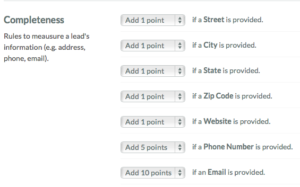When sales and marketing work together harmoniously, all is well. Marketing builds the brand and drums up leads; sales reels them in and brings them home as paying customers. Yet we know. particularly for sales, that sales incentives are the critical driver for performance focus. With today’s more unified revenue value chain and closed-loop across marketing and sales, you may need to realign your incentive programs to drive alignment and focus on the behaviors and results you seek. Programs need to fit in with your revenue operating model and reinforce team revenue performance.
Motivate Success
 Incentive systems can motivate the right behaviors and align activities across marketing and sales. The incentive model should be transparent and readily understandable while clearly motivating your teams to perform in accordance with the prevailing company revenue strategy. Incentives can be a highly effective way to encourage and motivate, build morale and drive desired behavior. A study called Incentives, Motivation and Workplace Performance showed that a stunning 92% of respondents cited incentives as the top reason they achieved a workplace goal. Incentives can have particularly big impact when the sales and marketing teams devise a program together to effectively drive sales team behavior.
Incentive systems can motivate the right behaviors and align activities across marketing and sales. The incentive model should be transparent and readily understandable while clearly motivating your teams to perform in accordance with the prevailing company revenue strategy. Incentives can be a highly effective way to encourage and motivate, build morale and drive desired behavior. A study called Incentives, Motivation and Workplace Performance showed that a stunning 92% of respondents cited incentives as the top reason they achieved a workplace goal. Incentives can have particularly big impact when the sales and marketing teams devise a program together to effectively drive sales team behavior.
The best, most effective incentive programs are SMART.
- Specific – target a specific area for improvement.
- Measurable – quantify or at least suggest an indicator of progress.
- Assignable – specify who will do it.
- Realistic – state what results can realistically be achieved, given available resources.
- Time-related – specify when the result(s) can be achieved.
Begin by identifying your specific and measurable performance goals. Ask focused questions:
- What exact targets and changes do we want to accomplish?
- What behaviors would we like to reinforce?
- How will we measure and track success?
- How will the incentive campaign be implemented and promoted?
Once you’ve defined core metrics of success and created an incentive program that’s right for your team, there are some additional things you should keep in mind:
Stretch targets. Incent based upon new, desired behavior, e.g. meeting a higher quota, selling a new product, etc. Rewarding existing quotas and behaviors won’t likely enhance productivity.
Find the sweet spot. Don’t set your incentive payout too high, or the sales team will neglect their core responsibilities to focus only on the prize. Conversely, the payout should not be so too low that it doesn’t drive interest. Find the measurable incentive payout “sweet spot” that truly motivates your employees.
Public recognition. Public recognition helps to affirm good behavior, boost morale and foster a sense of friendly competition among the staff by celebrating the successes.
Keep campaign awareness fresh. Send regular reminders to the staff that the incentive is in place.
Choose a long enough timeframe. Consider running your incentive program for a substantial amount of time, not just a month or a quarter. Studies show programs that run for at least a year generate a 44% increase in performance, while programs running for a week or less boost performance by just 20%.
Measure and Track ROI. Establish baseline measurements at the beginning of your campaign so that you can track results and successes back to actual sales.
Promote team spirit. Team-oriented incentive programs generate a performance increase of around 45% compared with incentive programs geared toward individuals, which yield just a 27% increase. However, both approaches can have a motivating effect, and it doesn’t have to be an either-or decision; experiment with different programs and see what your staff responds to the most.
Good luck and good selling! Are you looking to enhance revenue performance? Sign up for a revenue diagnostic using our 50-dimension model.



